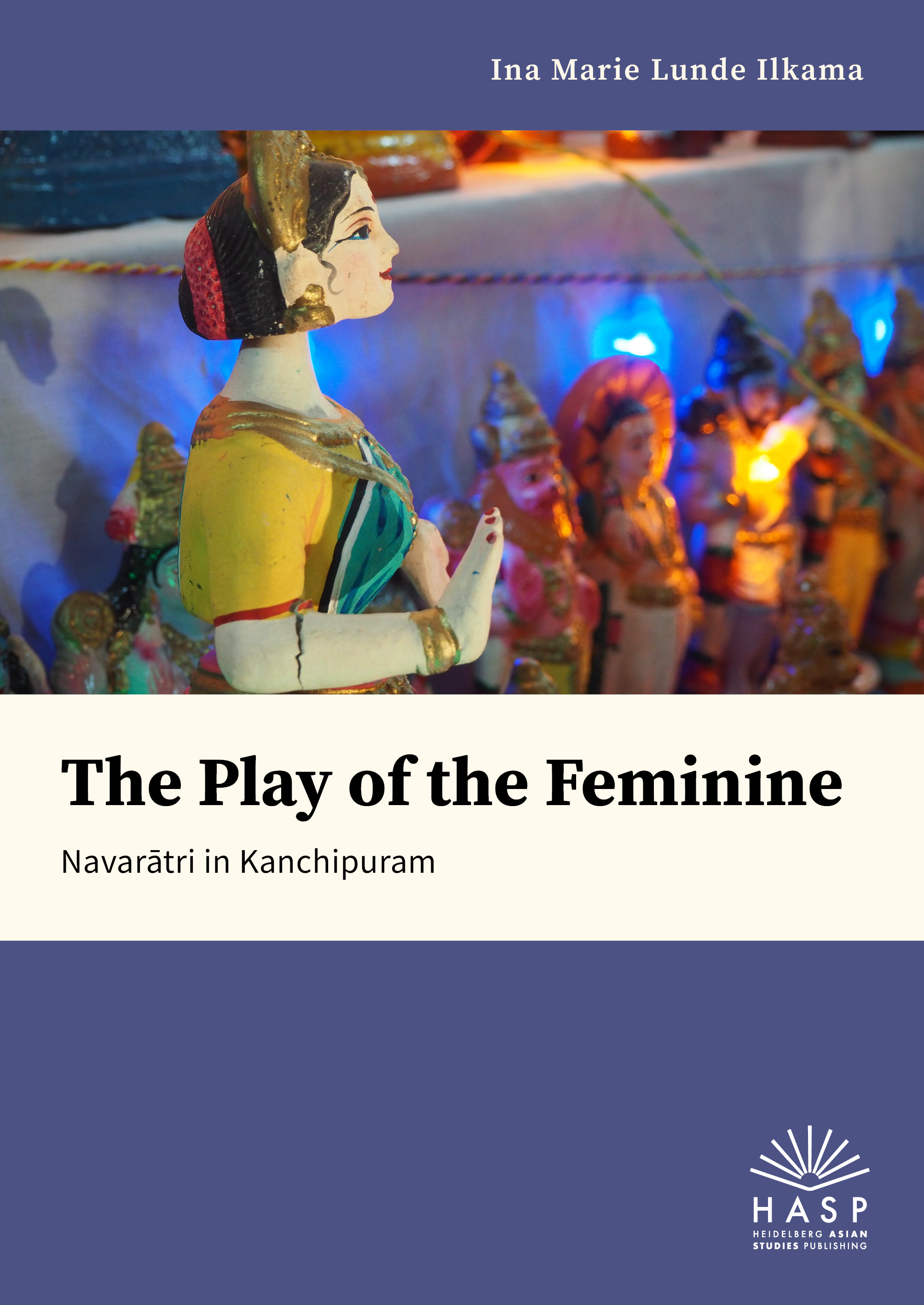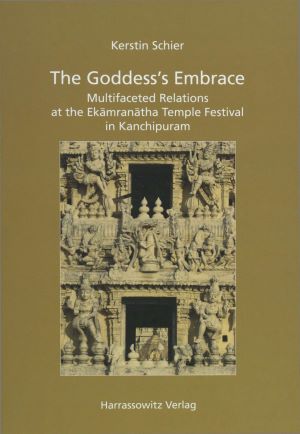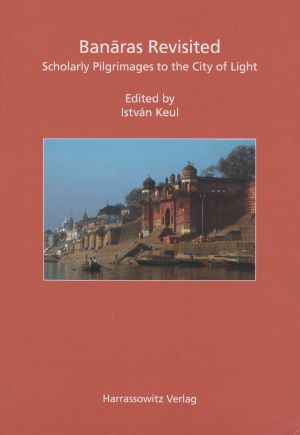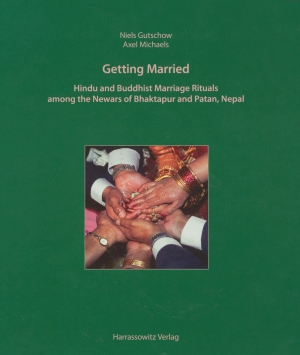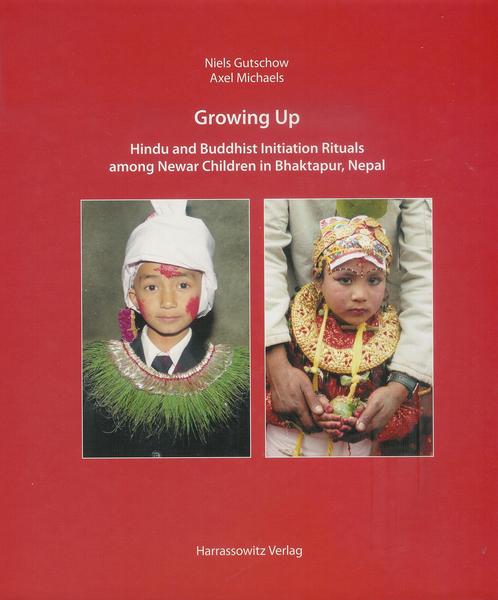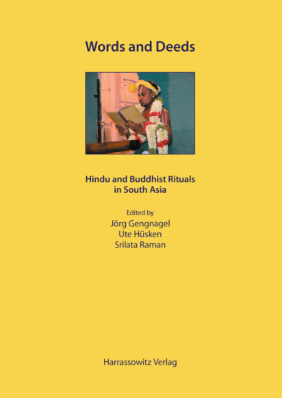Ethno-Indology
Die Publikationsreihe Ethno-Indology ist eine von Experten begutachtete Plattform für die Veröffentlichung von wissenschaftlichen Arbeiten, die sich mit südasiatischen Traditionen und Praktiken über die Methoden der Anthropologie und Indologie befassen - insbesondere für Monographien und thematischen Sammelbänden, die die Beziehung zwischen gelebten Kulturen und Texttraditionen untersuchen. Die Ethno-Indologie ist ein relativ neues Teilgebiet sowohl der Indologie als auch der Ethnologie Südasiens, das die Kluft zwischen dem Studium des alten Indiens und den gelebten Traditionen des zeitgenössischen Südasiens zu überbrücken sucht. Die Buchreihe Ethno-Indology widmet sich der Erforschung eines breiten Spektrums von Themen, einschließlich der Beziehung zwischen religiösen Texten und Praktiken. Einreichungen von Nachwuchswissenschaftler:innen und etablierten Forscher:innen in englischer oder deutscher Sprache sind willkommen.
##plugins.generic.hdforthcoming.forthcoming##
Here and Elsewhere
Here and Elsewhere offers a grounded study of crucial modes of sanctification and imagination of Hindu geographies: spatial transposition and substitute pilgrimage. It looks at the local representatives of the pan-Indian jyotirliṅgas in Varanasi (Banaras) and the urban pilgrimage connected to them by combining interpretative analysis of glorifications (māhātmyas) with in-depth ethnographic research. This enables the author closely to observe the strategies that a variety of social actors employ to knit together and reproduce connections between places of the here and the elsewhere, and to locate deities and themselves within multiple spatial dimensions, both lived and imagined.
##plugins.themes.ubOmpTheme01.alreadyPublished##
The Play of the Feminine: Navarātri in Kanchipuram
In Tamil Nadu, the nine-night autumnal Navarātri festival can be viewed as a celebration of feminine powers in association with the goddess. This book explores Navarātri as it is celebrated in the South Indian temple town of Kanchipuram. It investigates the local mythologies of the goddess, two temple celebrations, and the domestic ritual practice known as kolu (doll displays). The author highlights three intersecting themes: namely the play of the goddess in myth and ritual, the religious agency and images of women and the divine feminine, and notions of playfulness in Navarātri rituals; as articulated in creativity, aesthetics, competition, and dramatic expressions.
The Goddess’s Embrace: Multifaceted Relations at the Ekāmranātha Temple Festival in Kanchipuram
The study by Kerstin Schier examines the big annual festival (mahotsava) at the Ekāmranātha temple in the South Indian town Kanchipuram, which – among other things – dramatises the divine marriage between god Śiva (as Ekāmranātha) and the goddess, generally considered to be Kāmākṣī.
In the course of the festival’s rituals gods and goddesses, temples, and religious traditions relate to each other in many ways. These complex and multifaceted relations are studied by taking into account different types of historical and contemporary sources, and by combining textual analysis with the observation and study of ritual performances, interviews, and oral narratives.
The book provides a detailed description and analysis of the divine marriage’s contemporary ritual practice and its associated myth in Sanskrit and Tamil texts. It also takes into consideration the different views and interpretations of members of local communities, temple priests, donors, and other participants, which leads to a multiplicity of perspectives on the festival.
Banāras Revisited: Scholarly Pilgrimages to the City of Light
In Banaras Revisited, scholars from various disciplines talk about their research in a city that has been described as a veritable microcosm of India: multifaceted, complex, vibrant, and full of contradictions. The themes range from the sensory aesthetics of everyday life to the history of the Marathas in Banaras; from Harishchandra, the father of modern Hindi, to the tribals of Nagwa; from the architecture of the ghats to the works of the Austrian writers Zweig and Winkler; from informative relationships with research assistants to the mediatization of goddesses; from reflections on public education to a contemporary literary chronicler of Assi; from colonial ghosts in the 1950s to present-day Western travelers. In addition to its thematic diversity, the volume benefits from another strong asset: the voices of its contributors, clearly audible in reflexive passages and personal vignettes that make the essays a useful reading also for undergraduates considering fieldwork in Banaras or elsewhere.
Getting Married: Hindu and Buddhist Marriage Rituals Among the Newars of Bhaktapur and Patan, Nepal
With contributions by Manik Bajracharya, Christiane Brosius, and Tessa Pariyar
Getting Married is the third and final volume on Hindu and Buddhist life-cycle rituals among the Newars of the ancient city of Bhaktapur in Nepal. It combines extensive fieldwork and the edition and translation of relevant ritual handbooks. While Handling Death, the first volume, focussed on the dynamics of death and ancestor rituals, and Growing Up, the second volume, focussed on the rituals of childhood, adolescence and youth (especially the male and female initiation rituals), the present volume deals with a number of rituals related to marriage.
After an introductory overview of studies on marriage rituals in Nepal the authors give some basic marriage rules of Hindu and Buddhist Newars, the social topography and hierarchy, the families of the marriage partners as well as the problems of endogamy and exogamy in Bhaktapur. They present a detailed description of Hindu and Buddhist marriage rituals among Newars (which are partly documented on the DVD included in this book) and come to relevant conclusions regarding life-cycle rituals in general and the place marriage rituals occupy in Newar society and Hinduism. Furthermore the texts used by Brahmin and Buddhist priests during these rituals are edited and translated and complemented by comprehensive Appendices including a list of elements of Newar rituals and mantras as well as a mantra and general index to all three volumes. The richly illustrated books have been highly appreciated by the scholarly community as a unique attempt to provide a comprehensive ethno-indological study of all major life-cycle rituals of a certain Hindu and Buddhist community.
The film, which was originally published on a DVD accompanying the book, is archived in the heidICON multimedia database and can be viewed via the following link:
Getting Married
Viṣṇu's Children: Prenatal life-cycle rituals in South India
The Vaikhānasas, a group of Brahmanic priests in the Viṣṇu temples of south India, can look back on a long and turbulent history, that is characterized by the effort of claiming their status against rivalling priests. Central to this monograph is a controversy, ongoing for centuries, as to what makes a person eligible to perform the rituals in Viṣṇu temples: does birth or an initiation create the ideal intermediary between the god and humans? Since the 14th century CE the discussions in the relevant Sanskrit texs centre around the question of whether the Vaikhānasas priests must undergo an initiation including a branding on the upper arms, or whether their particular prenatal life-cycle ritual viṣṇubali makes them eligible to perform temple ritual. As hereditary temple priests the Vaikhānasas’ own stance is explicit: they are Viṣṇu’s own children, preordained for temple service already before birth. In addition to the textual perspective, three instances of local conflicts from the 19th/20th centuries about the question of whether the Vaikhānasas require an initiation are analysed in their contexts. Furthermore, three examples of present-day performances of the viṣṇubali ritual are presented and interpreted in the light of the relation between text and performance.
The films, which were originally published on a DVD accompanying the book, are archived in the heidICON multimedia database and can be viewed via the following links:
- Introduction (length 08:10 min)
- Full ritual (length 28:28 min)
- Prepatory rites - Formal declaration (03:51 min)
- Prepatory rites - Vitalisation of the sacrificial fire (06:45)
- Main offerings - Pūjā for Viṣṇu's twelve forms (11:09 min)
- Main offerings - Offering into the fire (09:01 min)
- Main offerings - Viṣṇu marks the unborn child (09:53 min)
- Atonement for ritual flaws (03:46 min)
- Concluding rites (04:43)
- Credits
Of Death and Birth: Icakkiyammaṉ, a Tamil Goddess, in Ritual and Story
Scholars of popular Hindu religion in India have always been fascinated by oral texts and rituals, but surprisingly only few attempts have as yet been made to analyse the relationship between rituals and texts systematically. This book contributes to the filling of this gap. Focusing on the dynamics of a local (non-Brahmanical) ritual, its modular organisation and inner logic, the interaction between narrative text and ritual, and the significance of the local versus translocal nature of the text in the ritual context, the study provides a broad range of issues for comparison. It demonstrates that examining texts in their context helps to understand better the complexity of religious traditions and the way in which ritual and text are programmatically employed. The author offers a vivid description of a hitherto unnoticed ritual system, along with the first translation of a text called the Icakkiyamman-Katai (IK). Composed in the Tamil language, the IK represents a substantially longer and embellished form of a core version which probably goes as far back as the seventh century C.E. Unlike the classical source, this text has been incorporated into a living tradition, and is being constantly refashioned. A range of text versions have been encapsulated in the form of a conspectus, which will shed light on the text’s variability or fixity and will add to our knowledge of bardic creativity.
The films, which were originally published on a DVD accompanying the book, are archived in the heidICON multimedia database and can be viewed via the following links:
Of Death and Birth: A Ritual of the Vēḷāḷas in Paḻavūr, India
- Original recording with voice-over in English.
- Original recording in Tamil without voice-over.
- Stories. The „Stories“ option comprises summaries of both texts sung in the ritual: The translocal story Icakkiyammaṉ Katai and The local Icakki story.
Growing Up: Hindu and Buddhist Initiation Rituals among Newar Children in Bhaktapur, Nepal
The authors – an architectural historian (Niels Gutschow) and an indologist (Axel Michaels) – are presenting the second part of a trilogy of studies of life-cycle rituals in Nepal, carried out under the auspices of the Collaborative Research Centre “Dynamics of Ritual”. The initiation of boys and girls of both Hindus and Buddhists of the ethnic community of Newars in the Kathmandu Valley are documented. The first part of the book presents elements of Newar rituals, the spatial background of Bhaktapur and the hierarchy of ritual specialists – illustrated by 21 maps. The second part documents with detailed descriptions the. rst feeding of solid food, birthday rituals, and pre-puberty rituals like the first shaving of the hair, the boy’s initiation with the loincloth (in Buddhist and Hindu contexts), the girl’s marriage with the bel fruit and the girl’s seclusion. One girl’s marriage (Ihi) and three boy’s initiations (Kaytapuja) are documented on a DVD. The third part presents the textual tradition: local handbooks and manuals used by the Brahmin priest to guide the rituals. Two of these texts are edited and translated to demonstrate the function of such texts in a variety of contexts.
The films, which were originally published on a DVD accompanying the book, are archived in the heidICON multimedia database and can be viewed via the following links:
1. Bel fruit and loincloth - initiations of boys and girls in Bhaktapur, Nepal
2. Bel-Frucht und Lendentuch - Initiationen von Mädchen und Jungen in Bhaktapur, Nepal
Handling Death: The Dynamics of Death and Ancestor Rituals Among the Newars of Bhaktapur, Nepal
In a rare combination of competence, an architectural historian (Niels Gutschow) and an indologist (Axel Michaels) have documented death rituals of the ethnic community of Newars in the Kathmandu Valley, Nepal. The first part of the book focusses to a specific setting, the ancient city of Bhaktapur and its calendric rituals of death and renewal. An introduction to the urban fabric with its cremation places, routes of death processions, places of spirits and ancestor deities is followed by a presentation of specialists involved in the death and ancestor rituals – illustrated by 28 maps. The second part presents a detailed description of the union of the deceased with his forefathers, a ritual which is also documented on a DVD. In addition, local handbooks and manuals used by the Brahmin priest during this ritual are edited and translated. This ethno-indological method of combination of textual and contextual approaches aims at understanding both the agency in rituals and the function of the text in contexts. Formalized rituals turn out to be by no means strict, stereotypical and unchangeable. The uniqueness of the actors, places and time has prompted the authors to name places and actors and to date time. The study of death rituals represents the first part of a trilogy of studies of life-cycle rituals in Nepal, carried out under the auspices of the Collaborative Research Centre “Dynamics of Ritual” (Sonderforschungsbereich 619: Ritualdynamik).
The ritual was documented by Christian Bau with a video camera and is included as a film on the DVD.
The films, which were originally published on a DVD accompanying the book, are archived in the heidICON multimedia database and can be viewed via the following links:
- Handling death – Latyā – a death ritual of the Newars in Bhaktapur, Nepal
- Den Tod in die Hand nehmen – Latyā - ein Totenritual der Newars in Bhaktapur, Nepal
Words and Deeds: Hindu and Buddhist Rituals in South Asia
Words and Deeds is a collection of articles on rituals in South Asia with a special focus on their texts and context. The volume presupposes that a comprehensive definition of “ritual” does not exist. Instead, the papers in it avoid essentialist definitions, allowing for a possible polythetic definition of the concept to emerge. Papers in this volume include those on Initiation, Pre-Natal Rites, Religious Processions, Royal Consecration, Rituals which mark the commencement of ritual, Rituals of devotion and Vedic sacrifice as well as contributions which address the broader theoretical issues of engaging in the study of ritual texts and ritual practice, both from the etic and the emic perspective. These studies show that any study of the relationship between the text and the context of rituals must also allow for the possibility that different categories of performers can and do subjectively constitute the relationship between their ritual knowledge and ritual practice, between text and context in differing and nuanced ways.




